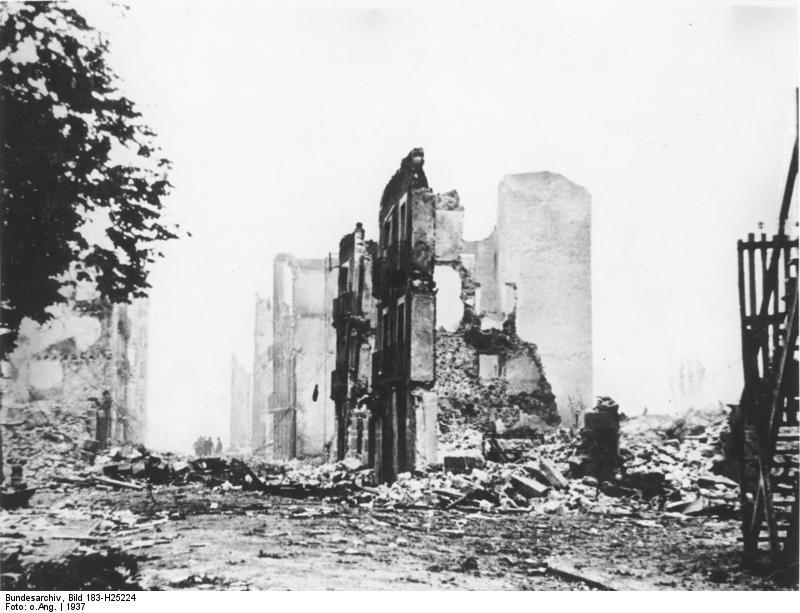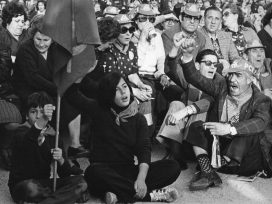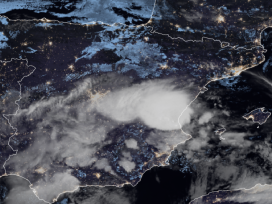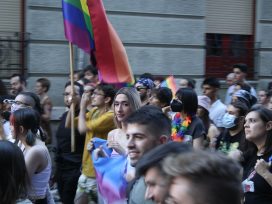In the first few months of 1936, Spanish society was highly fragmented. There was uneasiness between factions and, as was happening all over Europe with the possible exception of the United Kingdom, the rejection of liberal democracy in favour of authoritarianism was rife. None of this need have led to a civil war. The war began because a military uprising against the Republic undermined the ability of the State and the Republican government to maintain order. The division of the army and security forces thwarted the victory of the military rebellion, as well as their main objective: the rapid seizure of power. But by undermining the government’s ability to keep order, this coup d’état transformed into the unprecedented open violence employed by the groups that supported and those that opposed it. It was July 1936 and thus began the Spanish Civil War.
The civil war came about because the military coup d’état failed to achieve its basic objective at the outset, which was to seize power and overthrow the republican regime, and because, unlike the events in other republics of the time, there was comprehensive resistance, both military and civil, to counter any attempt at imposing an authoritarian system. Had it not been for this combination of coup d’état, division of the armed forces and resistance, there would never have been a civil war.
This coup d’état met resistance because the Spanish society of 1936 was not the same as that of 1923, when the September uprising led by General Miguel Primo de Rivera was favoured by the general abstention of the army, the weakness of the government, the apathy of public opinion and above all, the consent of King Alfonso XIII.
In 1936 there was a Republic in Spain, whose laws and measures had given it the historical opportunity to solve insurmountable problems, but it had also come across, and caused, major factors of instability, which successive governments could not provide the proper resources to counteract. Against such a widespread level of political and social mobilization as had been set in motion by the Republican regime, the coup d’état could not end, as had occurred so many times in Spain’s history, in a mere return to the old order, based on traditional values. To overthrow the Republic, what was needed was a new, violent, antidemocratic and antisocialist order, such as had previously been established elsewhere in Europe, to end the crisis and repair all the fissures that had been opened, or widened, by the Republican regime.
There is no simple answer as to why the climate of euphoria and hope in 1931, when the Second Republic was founded, transformed into the cruel, all-destructive war of 1936-1939. The threat to social order and the subverting of class relations were perceived with greater intensity in 1936 than in the first few years of the Republic. The political stability of the regime was also under greater threat. The language of class, with its talk of social divisions and incitements to malign one’s opponents, had gradually permeated the atmosphere in Spain. The Republic had tried to change too many things at once: land, the Church, the army, education and labour relations. It raised major expectations that could not be met, and it soon made many powerful enemies.
In charge of the organization of the plot were various right-wing officers, including some from the Unión Militar Española (UME), a semi-clandestine anti-leftist organization consisting of several hundred officers. A group of generals, including Francisco Franco, met on 8 March in Madrid, and decided to mount “an uprising to re-establish order in the interior as well as Spain’s international prestige”. General José Sanjurjo, who had led the first attempt at military rebellion against the Republic in August 1922, and who was living in Portugal after his pardon in April 1934, was appointed head of the uprising, although the leading role was played by General Emilio Mola, who coordinated the entire conspiracy.
The assassination of José Calvo Sotelo, the rightwing monarchist leader who defended an authoritarian and corporative State, committed at dawn on 13 July 1936 by members of the Republic’s police force, convinced the plotters of the urgent need to intervene, and brought into the fold many of the undecided, who were waiting for things to become clearer before agreeing to participate in the coup and risk their salaries and lives. Among them was General Franco, stationed in the Canary Islands, who took command of the garrisons that rose up in Spanish Morocco on the evening of 17 July 1936. In the early hours of 18 July, Franco declared a state of war and pronounced himself in opposition to the government of the Republic. On 19 July he arrived at Tetuán. Meanwhile, many other military garrisons in the Peninsula joined the coup. Peace was over in the Republic.
There were several distinct conflicts during this war. Firstly, a military conflict, initiated when the coup d’état buried political solutions and replaced them with arms. It was also a class war, between differing conceptions of social order, a war of religion, between Catholicism and anticlericalism, a war revolving around the idea of patria and nation, and a war of ideas, beliefs that were at that time at loggerheads on the international stage. It was a war that was impossible to reduce to a conflict between communism and fascism, or between fascism and democracy. In short, the Spanish Civil War was a melting pot of universal battles between bosses and workers, Church and State, obscurantism and modernization, set in an international context that had been thrown out of balance by crises of democracies and the onslaught of communism and fascism.
The Spanish Civil War has gone down in history, and in the memory that remains of it, for the way it dehumanized its adversaries and for the horrific violence that it generated. Symbolized by the mass killings, it served the two sides in their struggle to eliminate their respective enemies, whether natural or unforeseen. While carrying out this extermination, the rebels were also given the inestimable blessing of the Catholic Church from the very beginning. The clergy and sacred objects, however, were the prime target of popular rage, of those who took part in defeating the military rebels and who played leading roles in the “popular terror” that took place in the summer of 1936. Thus, Catholic religion and anticlericalism were passionately bound up in the battle over basic themes related to the organization of society and the State that was being unleashed in Spanish territory.

Guernica in ruins in 1937 following its aerial bombardment by the German Condor Legion. Source: Wikimedia
Lawless, arbitrary shootings and massacres eliminated enemies, real or presumed, on both sides. In the three months following the July 1936 uprising, the war was a struggle between armed militias, who lacked the basic elements of a conventional army, and a military power that concentrated all its resources in authority, discipline, the declaration of martial law, and almost from the start was able to employ the services of the well-trained troops of the Army of Africa.
The Battle of Madrid, in November of that year, saw the arrival of a new form of waging war and transformed this group of militiamen into soldiers in a new army. After the failure of various attempts to take Madrid between November 1936 and March 1937, Franco changed his strategy and chose to unleash a war of attrition, the gradual occupation of territory and total destruction of the republican army. His material and offensive superiority led him to the final victory two years later.
The military uprising of July 1936 forced the Republic, a democratic and constitutional regime, to take part in a war it had not begun. What followed this military coup was the outbreak of a social revolution that the Republican State, in losing a large part of its strength and sovereignty, was also powerless to prevent. This revolutionary process began suddenly and violently, its objective being to destroy the positions of the privileged classes, the Church, the army, the rich, but also the Republican authorities who were trying to maintain legitimacy.
Until it was defeated, on 1 April 1939, the Republic went through three different stages, each under a different prime minister. The first government, led by the republican José Giral (1879-1962), was marked by its resistance to the military uprising and the revolution. Since Giral did not represent the new revolutionary and trade union powers that emerged in the summer of 1936, he was forced to resign and hand over to the workers’ and socialist leader Francisco Largo Caballero (1869-1946), who began, with the collaboration of all the political and trade union forces, the reconstruction of the State, created a regular army and took over control of the revolution. After the serious events of May 1937, he handed over to Juan Negrín (1892-1956), a socialist member of parliament and university professor who resolved, as one of his main objectives, to change the democratic powers’ non-intervention policy. These three prime ministers died in exile: Giral in Mexico and Largo Caballero and Negrín in Paris.
Those who rose against the Republic did not have so much difficulty in finding a single military and political leader. As of 1 October 1936, Francisco Franco was “Head of Government of the Spanish State”. His military colleagues who put him there thought that this post would be temporary, that the war would soon be over with the conquest of Madrid and that then would be the time to think of a political framework for the new State. However, after various frustrated attempts to take the capital, Franco changed his military strategy and what might have been a rapid seizure of power became a long, drawn-out war. He was also convinced, particularly after the arrival in Salamanca of his brother-in-law, Ramón Serrano Suñer, who had managed to escape from the “red confinement” in Madrid in mid-February 1937, that all the political forces needed to be united in a single party.
“Head of Government of the Spanish State”, Caudillo, Generalísimo of the Armed Forces, undisputed leader of the “Movement”, as the single party was known, Franco confirmed his absolute dominance with the creation on 30 January 1938 of his first government, in which he carefully distributed the various ministries among officers, monarchists, Falangists and Carlists. The construction of this new State was accompanied by the physical elimination of the opposition, the destruction of all the symbols and policies of the Republic and the quest for an emphatic, unconditional victory with no possibility of any mediation.
In this quest, Franco had the support and blessing of the Catholic Church. Bishops, priests and the rest of the Church began to look on Franco as someone sent by God to impose order in the “earthly city” and Franco ended up believing that, indeed, he had a special relationship with divine providence. Thus emerged Franco’s Church, which identified with him, admired him as Caudillo, as someone sent by God to re-establish the consubstantiality of traditional Spanish culture with the Catholic faith.
The international situation at the end of the 1930s was hardly conducive to peace, and this played a decisive role in the duration, progress and final result of the Spanish Civil War, a conflict that was clearly internal in its origin. International support for both sides was vital for fighting and continuing the war during the early months. As the war progressed, non-interventionism, imbalances in the material resources of the two sides, the participation of Nazi Germany and Fascist Italy and, in most cases, the non-involvement of the western democracies were, together with disunity in the republican camp and unity among the Francoists, decisive factors in tipping the balance towards the final victory of the military rebels.
The Spanish Republic therefore had to wage war against an army favoured by the international situation. Dictatorships under the rule of a single man and a single party had substituted democracy in many countries and, except in Russia, all these parties were on the Right. Six of the continent’s democracies were invaded by the Nazis the year after the Civil War ended. Spain, then, was no exception in a continent ruled by the authoritarian Right. But this cannot excuse a wide sector of Spanish society, the political and union leaders, soldiers and churchmen, who did nothing to develop a civic culture of respect for the law, for electoral results, for freedom of expression and association, and for civil rights.
Many Spaniards saw the war as a horror from the start; others felt they were in the wrong zone and tried to escape. Some figures in the Republic did not take sides, forming a “third Spain”. But millions of people were forced to take sides, some getting their hands dirtier than others. Spain began the 1930s with a Republic and ended the decade under an authoritarian right-wing dictatorship. Whatever we may say of the violence that preceded the Civil War, it is clear that in Spanish history there is a before and after to the coup d’état of July 1936.
Nationalists and Republicans had such different ideas of how to organize the State and society, and were so committed to their aims, that settlement was difficult. Franco’s victory was also a victory for Hitler and Mussolini, and the Republic’s defeat a defeat for democracies. Following this, there was no attempt at reconstruction in Spain, as had occurred in western Europe after 1945.
The war lasted almost a thousand days, leaving long-lasting scars on Spanish society. The total number of dead, according to historians, was nearly 600,000, of whom 100,000 were due to the repression unleashed by the military rebels, and 55,000 due to the violence in the republican zone. Half a million people were crowded in prisons and concentration camps.
The Spanish Civil War was followed by a long uncivil peace. The official end of the war on 1 April 1939 did not end the violence. Thus began a new period of mass executions, prison and torture for thousands of men and women. Death was unleashed with total impunity, the same impunity that had guided the massacres undertaken by the military rebels since July 1936. At least 50,000 people were executed in the decade following the end of the war, to say nothing of the thousands of deaths caused by hunger and disease in the various prisons. It was a purge that dismantled the culture and social foundations of the Republic, the labour movement and secularism.
From April 1939 onwards, Spain experienced the peace of Franco, the consequences of the war and of those that caused it. Spain was left divided between victors and vanquished. The churches were filled with plaques commemorating those who had “fallen in the service of God and the Fatherland”. On the other hand, thousands of Spaniards killed by the violence initiated by the military rebels in July 1936 were never registered nor even had an insignificant tombstone to remember them by; their families are still searching for their remains today.
The reformist discourse of the Republic and all that this form of government meant was swept up and scattered over the graves of thousands of citizens; and the workers’ movement was systematically eliminated along with its organizations and its culture, in a process that was more violent than that suffered by other anti-Fascist movements in Europe. This was the “surgical operation on the social body of Spain” so vehemently demanded by the military rebels, the land-owning classes and the Catholic Church.
The climate of order, patria and religion overrode that of democracy, the Republic and revolution. In short, in Franco’s long and cruel dictatorship lies the exceptional nature of Spain’s twentieth-century history if it is compared to that of other western capitalist countries. It was the only dictatorship, apart from that of Antonio de Oliveira Salazar in Portugal, set up in interwar Europe to survive World War II. With Hitler and Mussolini dead, Franco continued for another thirty years. The darkest side of this European civil war, this time of hate, that ended in 1945, was to live on in Spain for a long time yet.
Five basic readings
Antony Beevor, The Battle for Spain: The Spanish Civil War 1936-1939, Weidenfeld & Nicolson, 2006
Julián Casanova, A Short Histoy of the Spanish Civil War, I.B. Tauris, 2012
Ronald Fraser, Blood of Spain: Experience of the Civil War, Viking, 1979
Helen Graham, The Spanish Civil War: A Very Short Introduction, Oxford University Press, 2005
Paul Peston, The Spanish Civil War, Harper Perennial, 2006







